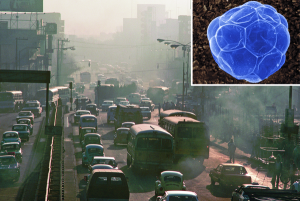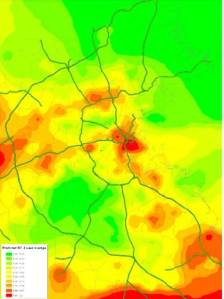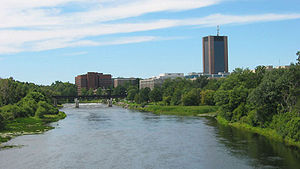Today’s review article from Australia compares the health impact, in terms of tail pipe emissions, from unleaded gas to fuel which has 5 and 10% ethanol. While the benefits of ethanol additive outweighs the negative impacts of particulate matter, as modern fleets reduce the amount of PM emissions the gap narrows. Overlooked or beyond the scope of this article is the impact of emissions in terms of greenhouse gas emissions which in turn is associated with greater health impacts from climate change. Some research indicates that ethanol blended fuel is less efficiently used by combustion engines than regular fuel which would indicate perhaps that such blends also have a negative health impact. A more holistic assessment is needed to resolve this question.

Key Quotes:
“Adding such small quantities of ethanol to petrol increases the vapour pressure, thus increasing evaporative emissions. The oxygen in the ethanol alters the combustion characteristics of the fuel leading to a different chemical profile of tailpipe emissions”
“the quantified health impact differential between ULP and ethanol fuelled vehicles drops from 2006 to 2011. This is because modern petrol vehicles, with lower emissions than their older counterparts, will make up a higher proportion of the fleet in the future”
“The effects of ethanol blends on regulated emissions—total hydrocarbons (THC) and carbon monoxide (CO) generally follow the well-established trend for the use of an oxygenated fuel, such as ethanol blended fuels. THC and CO emissions usually decrease with increases in ethanol content, whereas NOx emissions do not show such a clear trend”
“ Over 99% of the PM2.5 health costs are due to reductions in short and long term mortalities. Short term mortalities arise from respiratory illnesses, long term mortality from cancers”
“The overall quantified health benefit of using ethanol blends is overwhelmingly dominated by reductions in particulate matter”
Related articles
- Why is ethanol used in fuel? (greenanswers.com)
- Motorcycles And ATV's. The Ethanol Fuel Debate. (cyrilhuzeblog.com)
- Older cars get ethanol OK (politico.com)
- Study suggests that increased enthalpies of vaporization in ethanol/gasoline mixtures could account for increased PM emissions from GDI engines fueled with ethanol blends (greencarcongress.com)
- Gasoline with higher ethanol blend available in U.S. soon (scientificamerican.com)
- What is the most common alternative fuel? (greenanswers.com)
- Interview with Jeff Broin, CEO of POET (matternetwork.com)
- AP sources: EPA expected to OK more auto ethanol (seattletimes.nwsource.com)
- E.P.A. Approves More Ethanol in Auto Fuel (nytimes.com)
- Unwanted Ethanol in Gasoline (brighthub.com)
- Ethanol: EPA Approves More Corn-Based Fuel for Cars (ecoworld.com)
- EPA approves gasoline with 15% ethanol for 2001-06 cars (content.usatoday.com)




































